Permanent tissue is composed of cells that have lost the meristematic power and do not divide further. They may be living or dead cells, and thin-walled or thick-walled. Based on the composition of cells, permanent tissue is classified into two – Simple and Complex tissues.
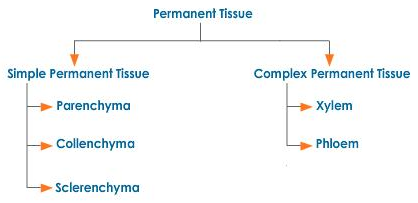
Simple permanent tissue
Permanent tissue made of a single type of cells is called a simple permanent tissue. It forms a homogeneous (uniform) mass of cells. There are three types of simple tissues.
Parenchyma
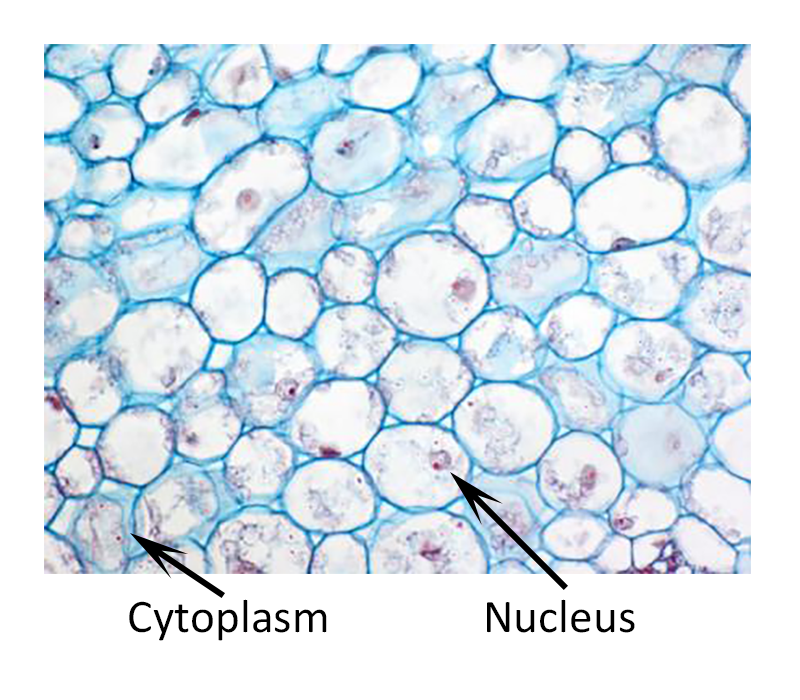
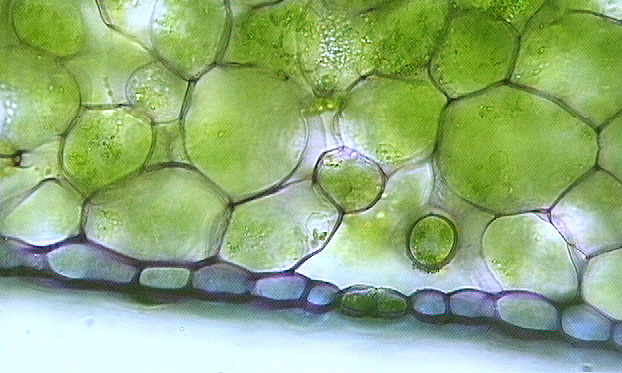
- Parenchyma is the most common type of unspecialized tissue.
- They are thin walled cells, more or less isodiametric in shape, with or without intercellular space.
- They have various shapes – oval, spherical or polygonal.
- The cell wall is made of cellulose.
- The main function of parenchyma cells is storage.
- They are present in the cortex, pith, epidermis and pericycle.
- Chlorenchyma: When the parenchyma cells contain chlorophyll, they are called chlorenchyma and they carry out photosynthesis.
- Aerenchyma: When parenchyma cells are arranged with a regular system of intercellular air spaces, it is called parenchyma. These cells are found in aquatic plants, and provide byoyancy to the plants.

Collenchyma
- Collenchyma consists of living cells with vacuolated protoplasm.
- They are elongated cells and appear polygonal in cross section.
- The cell wall thickening is uneven. Walls at the corners are thicker than the rest of the wall, and hence the cells may also sometimes appear circular in cross section.
- The cell wall is made of cellulose and pectin.
- Collenchymas cells give strength and flexibility to the growing parts of the plant.
- They also have the ability to retain meristematic activity.
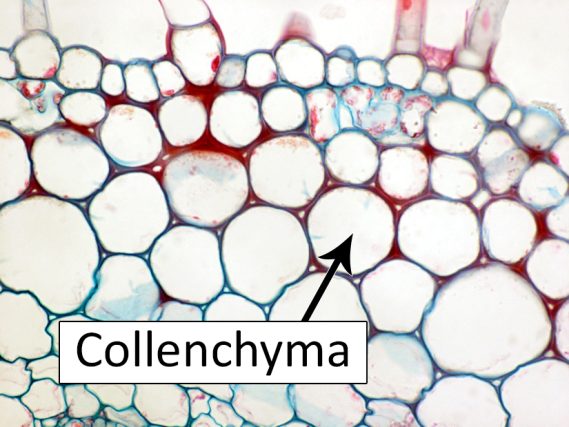
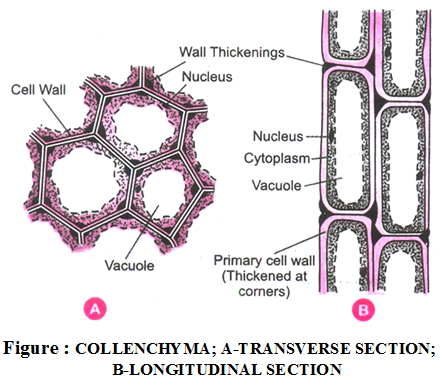
Sclerenchyma
- Sclerenchyma contains dead cells at maturity.
- The cell walls are thickened by the presence of lignin.
- Small pits are seen on the cell wall.
- Sclerenchyma tissue provides mechanical support to the plants and helps them to withstand various physical pressures.
- This tissue has 2 types of cells.

Sclereids
- They are also called sclerotic cells or stone cells.

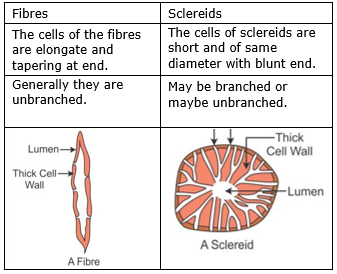
- They are thick walled cells with various shapes.
- The cell walls are strongly lignified and have a very narrow lumen.
- They occur in the shells of nuts, in hard seeds, stony fruits and in the pulp of fruits like pear, guava and sapota, making them gritty.
Fibres
- These are elongated sclerenchyma cells with pointed or tapering ends.
- In cross section, they look angular.
- The cell walls are hard, uniformely thickened and lignified.
- They are present widely in xylem tissue, phloem tissue, cortex and pericycle.
